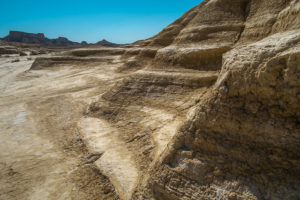The world is a book and those who do not travel read only one page. -St Augustine
Unfortunately,it’s not always possible to travel as much as you’d want. Maybe you have to prepare for exams. Or your boss isn’t as lenient as you would have liked. Maybe you just broke your leg. Maybe it’s a cashflow problem. Maybe your schedule isn’t aligning with your travel buddy. Or maybe it’s raining too much.
Have no fear! Books allow us to far and wide without ever leaving our living rooms – or bedrooms, or balconies, or favourite bookstore/cafe hangout 😉 At Pagdandi, it makes us smile when we see people enjoying the faraway experience of a book. We’re proud to bring faraway worlds to Baner.
It’s our belief that through books, you can travel anywhere.
Morocco

A small country in the northernmost part of Africa, Morocco shows just how much diversity can be found in the smallest of places. From metropolitan cities like Marrakesh, Casablanca, and Fez, to its mountains, beaches and sand dunes – there is something in Morocco for everyone. A mishmash of French, Spanish and Islamic influences, something is bound to surprise you at every turn.
1. The Spider’s House, by Paul Bowles

Set in Fez, Morocco, during that country’s 1954 nationalist uprising, TheSpider’s House is perhaps Paul Bowles’s most beautifully subtle novel, richly descriptive of its setting and uncompromising in its characterizations. Exploring once again the dilemma of the outsider in an alien society, and the gap in understanding between cultures—recurrent themes of Paul Bowles’s writings—The Spider’s House is dramatic, brutally honest, and shockingly relevant to today’s political situation in the Middle East and elsewhere.
2. A House in Fez, by Suzanna Clarke

When Suzanna Clarke and her husband bought a dilapidated house in theMoroccan town of Fez, their friends thought they were mad. Located in a maze of donkey-trod alleyways, the house – a traditional riad – was beautiful but in desperate need of repair. Walls were in danger of collapse, the plumbing non-existent. While neither Suzanna nor her husband spoke Arabic, and had only a smattering of French, they were determined to restore the building to its original splendour, using only traditional craftsmen and handmade materials. But they soon found that trying to do business in Fez was like being transported back several centuries in time and so began the remarkable experience that veered between frustration, hilarity and moments of pure exhilaration.
But restoring the riad was only part of their immersion in the rich and colourful life of this ancient city. A House in Fez isa journey into Moroccan culture, revealing its day-to-day rhythms,its customs and festivals; its history, Islam, and Sufi rituals; the lore of djinns and spirits; the vibrant life-filled market places and the irresistible Moroccan cuisine. And above all, into the lives of the people – warm, friendly, and hospitable.
Beautifully descriptive and infused with an extraordinary sense of place, this isa compelling account of one couple’s adventures in ancient Morocco.
3. In Morocco, by Edith Wharton

In 1917, amid the turmoil of World War I, Edith Wharton, the author of The Age of Innocence and The House of Mirth, travelled to Morocco. A classic of travel writing, In Morocco is her account of this journey through the country’s cities and through its deserts.
4. Morocco That Was, by Walter Harris

Here are the vanished days of the unfettered Sultanate in all their dark, melodramatic splendor – a mingling of magnificence with squalor,culture with barbarism, refined cruelty with nave humor. Until 1912Morocco never suffered foreign domination, and its mountainous interior was as closed to foreigners as Tibet. Walter Harris (1866-1933), though, was the exception. He first visited in 1887 and lived in the country for more than thirty-five years, and as theTimes correspondent had observed every aspect of its life. He was an intimate of at least three of the ruling Sultans (as well as King Edward VII) and a man capable even of befriending his kidnapper. It was said that only three Christians had ever visited the walled city of Chechaouen: one was poisoned, one came for an hour disguised as a rabbi, and the other was Harris. Originally published in 1921, Morocco That Was is alternately sharp, melodramatic, and extremely funny.
5. The Sand Child, by Tahar Ben Jalloun

In this lyrical, hallucinatory novel set in Morocco, Tahar Ben Jelloun offers an imaginative and radical critique of contemporary Arab social customs and Islamic law. The Sand Child tells the story of a Moroccan father’s effort to thwart the consequences ofIslam’s inheritance laws regarding female offspring. Already the father of seven daughters, Hajji Ahmed determines that his eighth child will be a male. Accordingly, the infant, a girl, is named Mohammed Ahmed and raised as a young man with all the privileges granted exclusively to men in traditional Arab-Islamic societies. As she matures, however, Ahmed’s desire to have children marks the beginning of her sexual evolution, and as a woman named Zahra, Ahmed begins to explore her true sexual identity. Drawing on the richArabic oral tradition, Ben Jelloun relates the extraordinary events of Ahmed’s life through a professional storyteller and the listeners who have gathered in a Marrakesh market square in the 1950s to hear his tale. A poetic vision of power, colonialism, and gender in NorthAfrica, The Sand Child has been justifiably celebrated around the world as a daring and significant work of international fiction.
Are there any books on Morocco that you’d like to add to this? Please let us know!
Happy reading. And happier travelling!
– Compiled and written by Manasi Nene




